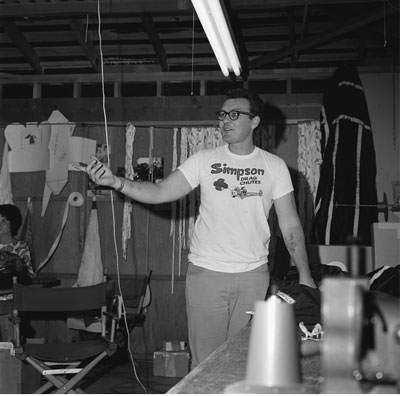 It would be difficult to estimate how many lives have been saved and injuries averted (or at least minimized) by the pioneering work of Bill Simpson. Simpson, who passed away in December 2019, was one of a handful of members of the racing community who dedicated their lives to improving driver safety.
It would be difficult to estimate how many lives have been saved and injuries averted (or at least minimized) by the pioneering work of Bill Simpson. Simpson, who passed away in December 2019, was one of a handful of members of the racing community who dedicated their lives to improving driver safety.
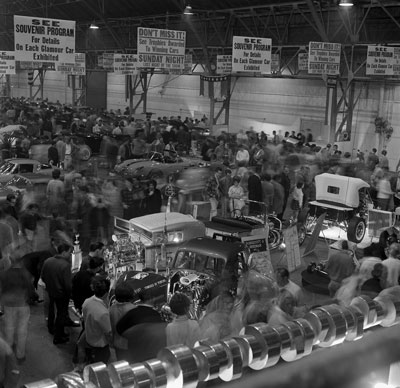 It’s February 1964 at the Grand National Roadster Show, and Petersen Publishing Company’s Bud Lang captures a rafters-eye view of crowds milling about some of the cars on display at the Oakland Exposition Building.
It’s February 1964 at the Grand National Roadster Show, and Petersen Publishing Company’s Bud Lang captures a rafters-eye view of crowds milling about some of the cars on display at the Oakland Exposition Building.
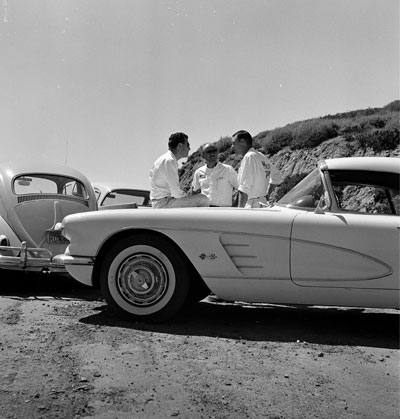 At first glance, this Motor Trend photo from 1959 looks like a very strange comparison test. Who would be cross-shopping a Volkswagen Beetle and a Corvette? And what’s that third vehicle hiding behind the other two?
At first glance, this Motor Trend photo from 1959 looks like a very strange comparison test. Who would be cross-shopping a Volkswagen Beetle and a Corvette? And what’s that third vehicle hiding behind the other two?
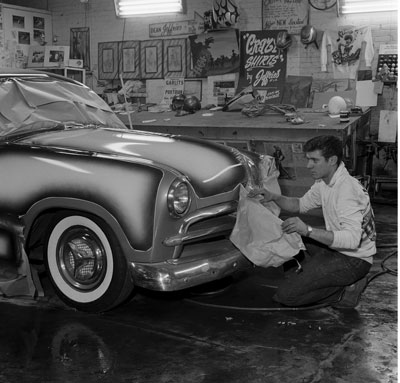 Trend-setting custom car builder Larry Watson is credited with creating the first panel paint job in 1958, when he tried to tone down the bright silver paint on his newly customized ’58 Thunderbird by covering several of the car’s body panels in metallic burgundy, leaving the silver to show through as accents.
Trend-setting custom car builder Larry Watson is credited with creating the first panel paint job in 1958, when he tried to tone down the bright silver paint on his newly customized ’58 Thunderbird by covering several of the car’s body panels in metallic burgundy, leaving the silver to show through as accents.
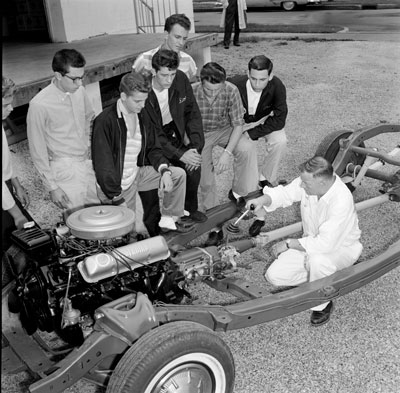 Hot Rod Technical Editor Ray Brock was on hand to document the car club’s visit and explain why an automotive chemical manufacturer happened to have a late-model Ford display chassis at its headquarters. Brock wrote in an October 1961 article that Zecol “maintains a racing shop with three ’61 Ford stock cars to advertise and test their products under the most extreme conditions, stock car track racing on the Midwestern USAC circuit.” Though the company’s race efforts were stock-car oriented, a drag-strip chassis “was built up for display to assist the many young racing enthusiasts who daily stop by the Zecol shops to ask advice” from mechanics Newkirk and Harold Carlson.
Hot Rod Technical Editor Ray Brock was on hand to document the car club’s visit and explain why an automotive chemical manufacturer happened to have a late-model Ford display chassis at its headquarters. Brock wrote in an October 1961 article that Zecol “maintains a racing shop with three ’61 Ford stock cars to advertise and test their products under the most extreme conditions, stock car track racing on the Midwestern USAC circuit.” Though the company’s race efforts were stock-car oriented, a drag-strip chassis “was built up for display to assist the many young racing enthusiasts who daily stop by the Zecol shops to ask advice” from mechanics Newkirk and Harold Carlson.
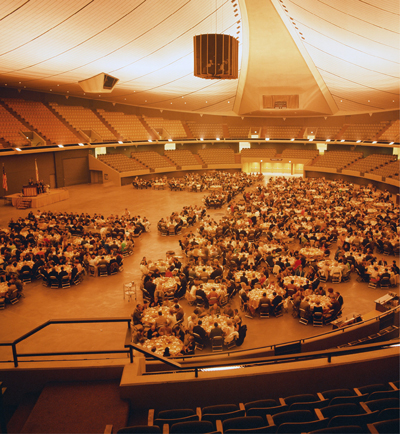 Fifty years ago, the Petersen Publishing Company magazine devoted to the business side of automotive enthusiasm devoted a large number of pages over two issues to cover the 1969 SEMA Show. The quotes reproduced above are the stories’ opening lines. Even five decades later, you can feel the adrenaline rush of enthusiasm and accomplishment the editors were experiencing on their first go-around with the coverage and how that rush transformed with a month’s hindsight into a less jubilant but more confident assessment of what went on at the Anaheim Convention Center in early January—and what it bode for the industry.
Fifty years ago, the Petersen Publishing Company magazine devoted to the business side of automotive enthusiasm devoted a large number of pages over two issues to cover the 1969 SEMA Show. The quotes reproduced above are the stories’ opening lines. Even five decades later, you can feel the adrenaline rush of enthusiasm and accomplishment the editors were experiencing on their first go-around with the coverage and how that rush transformed with a month’s hindsight into a less jubilant but more confident assessment of what went on at the Anaheim Convention Center in early January—and what it bode for the industry.
 Those who tuned in to the live-stream introduction of Chevrolet’s mid-engine C8 Corvette in July saw vintage footage of a single-seat roadster driving around GM’s Milford Proving Grounds and fishtailing up the dirt switchbacks of Pikes Peak. Chevy’s ’20 Corvette has roots back to that little car, the first Chevrolet Engineering Research Vehicle, or CERV I.
Those who tuned in to the live-stream introduction of Chevrolet’s mid-engine C8 Corvette in July saw vintage footage of a single-seat roadster driving around GM’s Milford Proving Grounds and fishtailing up the dirt switchbacks of Pikes Peak. Chevy’s ’20 Corvette has roots back to that little car, the first Chevrolet Engineering Research Vehicle, or CERV I.
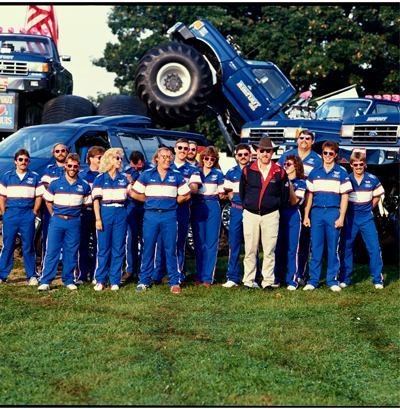 It would be nearly impossible to pinpoint the one person who invented, say, drag racing or road racing or most of our popular motorsports, which typically evolved with input from many “fathers” over long periods of time. Not so monster truck racing. That entire phenomenon—part competition, part spectacle, part thrill show—can be laid at the feet of one man: Bob Chandler. And one truck: a blue ’74 Ford F-250.
It would be nearly impossible to pinpoint the one person who invented, say, drag racing or road racing or most of our popular motorsports, which typically evolved with input from many “fathers” over long periods of time. Not so monster truck racing. That entire phenomenon—part competition, part spectacle, part thrill show—can be laid at the feet of one man: Bob Chandler. And one truck: a blue ’74 Ford F-250.
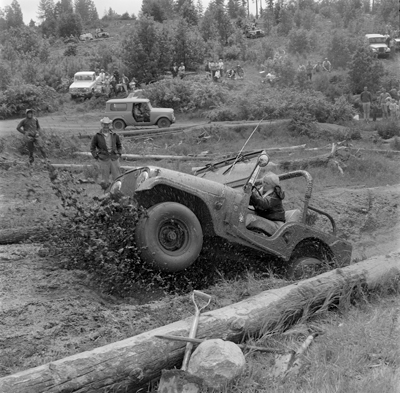 This summer will mark the 66th year since a group of Georgetown residents looking to promote interest in their small Northern California town hosted the first Jeep Jamboree over the rocky Rubicon Trail. Since then, the owners of countless Jeeps—and Scouts, Broncos, Land Cruisers, Land Rovers and dedicated rock buggies—have made the trek, from first-timers crossing off a bucket-list rite of passage to family members following years of four-wheeling tradition.
This summer will mark the 66th year since a group of Georgetown residents looking to promote interest in their small Northern California town hosted the first Jeep Jamboree over the rocky Rubicon Trail. Since then, the owners of countless Jeeps—and Scouts, Broncos, Land Cruisers, Land Rovers and dedicated rock buggies—have made the trek, from first-timers crossing off a bucket-list rite of passage to family members following years of four-wheeling tradition.
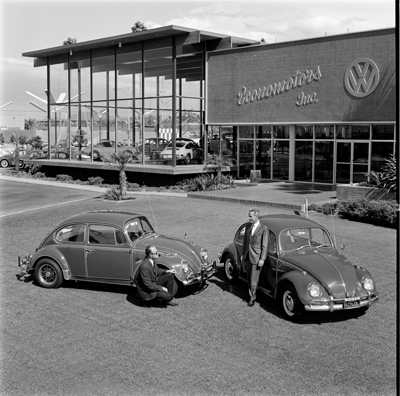 Hot Rod—the bible of all-American, big-cube performance—allotted four pages of its July 1967 issue to a story on an import-car dealership in Riverside, California, that was on the cutting edge of a growing automotive phenomenon.
Hot Rod—the bible of all-American, big-cube performance—allotted four pages of its July 1967 issue to a story on an import-car dealership in Riverside, California, that was on the cutting edge of a growing automotive phenomenon.
